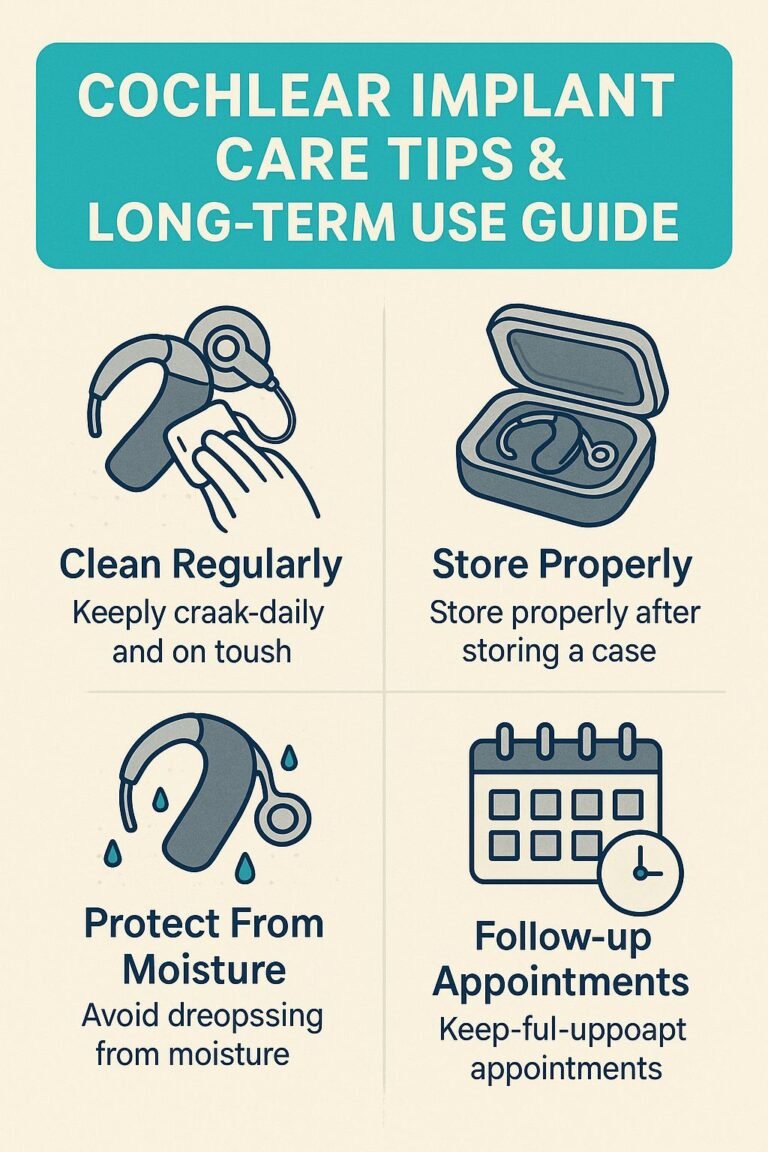Important Points:
- Often referred to as the “master gland,” the pituitary gland controls vital body functions by producing hormones.
- Hormone imbalances caused by pituitary gland disorders can lead to a variety of symptoms, affecting growth, metabolism, and overall health.
- Transsphenoidal surgery is a common treatment for pituitary tumors.
- Post-surgery recovery involves careful monitoring and hormone replacement therapy to ensure the body functions normally.
- Recognizing symptoms and seeking medical advice in a timely manner can effectively manage pituitary disorders.
Getting to Know the Pituitary Gland and Its Significance
Located at the base of the brain, the pituitary gland may be small, but it plays a crucial role in maintaining overall health. Known as the “master gland,” it controls the body’s endocrine system by releasing hormones that regulate various functions. Despite its small size, the pituitary gland has a big impact on growth, metabolism, and even how the body responds to stress.
Knowing how the pituitary gland works is important because any problems can cause serious health issues. From growth disorders to metabolic imbalances, the effects of a malfunctioning pituitary gland can be widespread. So, understanding how it works and what can go wrong is important for patients and healthcare providers.
“The pituitary gland may be small, but it’s mighty. This little gland, about the size of a pea, is responsible for regulating many of the body’s most important functions and maintaining balance within the body.” – Expert in Endocrinology
What the Pituitary Gland Does for the Body
The pituitary gland has the job of creating and letting go of hormones that have an impact on nearly every part of the body. It makes growth hormone, which is needed for development, and adrenocorticotropic hormone (ACTH), which has an effect on the adrenal glands. The pituitary gland also manages how the thyroid works through thyroid-stimulating hormone (TSH) and controls reproductive functions with luteinizing hormone (LH) and follicle-stimulating hormone (FSH).
The Importance of Understanding Pituitary Disorders
It’s critical to understand pituitary disorders because they can significantly impact a person’s health. For example, pituitary adenomas, which are noncancerous tumors, can cause everything from headaches to vision issues. Additionally, hormonal imbalances caused by pituitary problems can result in conditions such as Cushing’s disease or acromegaly, which can affect a person’s quality of life.
The Role of the Pituitary Gland
The main job of the pituitary gland is to make hormones that control many functions in the body. It serves as a go-between for the brain and the endocrine system, making sure the body reacts correctly to things happening inside and outside of it. For those interested in understanding how the body manages stress and anxiety, exploring post-COVID anxiety solutions can provide valuable insights.
Producing and Regulating Hormones
The front part of the pituitary gland is responsible for the production of several important hormones, such as:
- Growth Hormone (GH): This hormone is responsible for growth and cell reproduction.
- Prolactin: This hormone is responsible for stimulating milk production in women who are breastfeeding.
- Adrenocorticotropic Hormone (ACTH): This hormone stimulates the adrenal glands to produce cortisol.
- Thyroid-Stimulating Hormone (TSH): This hormone is responsible for regulating the thyroid gland.
- Luteinizing Hormone (LH) and Follicle-Stimulating Hormone (FSH): These hormones are responsible for controlling reproductive processes.
These hormones play a critical role in maintaining a balanced internal environment and enabling the body to effectively adapt to changes and challenges. Learn more about the pituitary gland and its functions.
The Role of Growth Hormone in Development
The growth hormone (GH) is crucial during childhood and adolescence as it is responsible for physical growth. When there is a deficiency in GH, it can cause growth disorders, and when there is an excess, it can lead to conditions like gigantism. Hence, the pituitary gland’s role in controlling growth is essential for normal development.
Even after we’ve grown up, GH is still important. It helps keep our muscles big and strong, our bones dense, and gives us energy. So if anything messes with how much GH we make, it can affect us for our whole lives. To maintain a healthy lifestyle, understanding your optimal daily water intake is also crucial.
How the Pituitary Gland Affects Metabolism
The pituitary gland isn’t just important for growth, it also plays a significant role in metabolism. It regulates the thyroid gland via TSH, which in turn affects how the body turns food into energy. If there’s an imbalance in thyroid hormones, it can lead to metabolic disorders. These disorders, such as hypothyroidism or hyperthyroidism, can affect your weight, energy levels, and overall health.
Frequent Pituitary Gland Disorders
There are many different types of pituitary gland disorders, each with its own unique set of symptoms and implications. It’s important to understand these disorders in order to diagnose them early and manage them effectively.
What You Should Know About Pituitary Adenomas
Pituitary adenomas are tumors that are not cancerous and occur in the pituitary gland. Despite being benign, they can still lead to serious health problems by pressing on nearby tissues or overproducing hormones. Symptoms often include headaches, vision issues, and imbalances in hormones.
While the precise cause of pituitary adenomas is still unknown, it is believed that both genetic factors and environmental influences could be contributing factors. To diagnose these tumors, doctors usually use imaging studies like MRI and hormone level assessments. For those experiencing related symptoms, understanding long COVID symptoms may also provide insights into hormonal imbalances.
There are different ways to treat pituitary adenomas, and the best approach often depends on the size of the tumor and how it is affecting the patient. Surgery is often the first choice, especially if the tumor is causing neurological symptoms. In some situations, it may be necessary to use medication or radiation therapy to control hormone levels or reduce the size of the tumor.
“Even though pituitary adenomas are benign, they can still significantly affect your health by throwing off your hormone balance and putting pressure on important structures.” – Neurosurgeon
Getting to Know Hypopituitarism
Hypopituitarism is a condition in which the pituitary gland is unable to produce enough of one or more of its hormones, or doesn’t produce them at all. This can be caused by a variety of factors, such as tumors, head injuries, infections, or radiation therapy. The symptoms of this condition can vary, depending on which hormones are affected, but they may include fatigue, weight loss, and a decreased sex drive.
Understanding Hyperpituitarism and Its Impact
Hyperpituitarism is a condition where the pituitary gland produces an excessive amount of hormones. The symptoms can vary, depending on which hormones are overproduced. For example, too much growth hormone can lead to acromegaly in adults, a condition characterized by enlarged hands and feet, facial changes, and joint pain. In children, it can lead to gigantism, resulting in abnormal height and growth.
If the pituitary gland produces too much thyroid-stimulating hormone, it can lead to hyperthyroidism. If there’s too much adrenocorticotropic hormone, it can lead to Cushing’s disease, which increases cortisol levels. These conditions can seriously affect a person’s life, so medical treatment is needed to restore hormone balance.
Introduction to Empty Sella Syndrome
Empty Sella Syndrome (ESS) is a disorder in which the sella turcica, a bony compartment at the base of the skull that contains the pituitary gland, looks empty. This can happen because of a birth defect or because of increased pressure inside the skull that flattens the pituitary gland. Despite the gland being squashed, it often still works as it should.
Empty sella syndrome might not always show symptoms, but when it does, they usually include headaches and vision problems. It’s less common, but hormonal imbalances can also occur. Doctors usually use imaging studies like MRIs to diagnose the condition, as these allow them to see the sella turcica. Treatment usually involves managing the symptoms and any underlying conditions that might be causing the syndrome.
Types of Surgery for Pituitary Gland Disorders
When it comes to pituitary disorders, particularly those involving tumors, surgery is often the preferred treatment. The aim is to either remove the tumor entirely or reduce its size, alleviate the symptoms, and bring hormone levels back to normal. The surgical approach chosen is dependent on the size and location of the tumor, as well as its effect on nearby structures.
When Should You Consider Surgery?
If you have a tumor that is causing severe symptoms or threatening nearby brain structures, you may need to have surgery on your pituitary gland. Symptoms that might make surgery necessary include constant headaches, changes in your vision, and hormonal imbalances that aren’t controlled by medication.
Moreover, doctors often advise surgery if the tumor is expanding or could impact critical functions. Sometimes, surgery is one component of a broader treatment strategy that may also involve medication or radiation therapy to fully manage the condition.
Understanding Transsphenoidal Surgery
Transsphenoidal surgery is the most frequently used procedure to remove pituitary tumors. This surgical procedure is performed by accessing the pituitary gland through the nasal passages and the sphenoid sinus, thus avoiding the need for invasive brain surgery. The procedure is favored because it decreases the recovery period and reduces the risk of complications.
Throughout the operation, medical professionals utilize specific tools and an endoscope to see and extract the tumor. The primary advantage of this method is that it allows for the tumor to be removed accurately while leaving the surrounding tissues untouched. The recovery period from transsphenoidal surgery is usually shorter than with other techniques, and most patients can return to their normal routine within a few weeks.
Craniotomy: The Basics
If the tumor is large or if it has spread beyond the pituitary gland, a craniotomy might be needed. This procedure involves making an opening in the skull to access and remove the tumor. Although it is more invasive than transsphenoidal surgery, a craniotomy enables surgeons to handle complex cases effectively.
It takes more time to recover from a craniotomy, and patients may need to be hospitalized for a few days after the operation. It’s critical to have follow-up care to watch for problems and make sure everything is healing correctly. Depending on how extensive the surgery was, patients may need to go through rehabilitation to get their strength and function back.
Healing and After-Surgery Care
Healing and after-surgery care are crucial to get the best results after pituitary gland surgery. Patients must follow their doctor’s advice closely to ensure a smooth healing process. This includes going to follow-up visits, taking prescribed drugs, and watching for any signs of problems.
If the surgery affects hormone production, you may need hormone replacement therapy. Regular blood tests can help monitor your hormone levels and adjust your medications as needed. Be aware of potential complications, like infection or bleeding. Seek medical help if you have any unusual symptoms.
Post-Surgery Expectations
After pituitary gland surgery, it’s normal for patients to experience some discomfort, such as headaches and nasal congestion, especially if they had transsphenoidal surgery. These symptoms usually go away within a few weeks. To ensure proper healing, patients should rest and avoid heavy physical activities during the early recovery phase.
The Necessity of Post-Operative Care
Post-operative care is crucial after pituitary surgery to guarantee a full recovery and deal with any lingering problems. Regular appointments enable healthcare professionals to keep track of hormone levels, evaluate recovery progress, and make necessary changes to treatment strategies. In certain instances, further treatments, like radiation therapy, might be suggested to prevent the tumor from returning.
Dealing with Possible Problems
Although it’s not common, there can be complications from pituitary surgery. Patients need to be on the lookout for signs of infection like a fever or redness where the surgery took place. If these symptoms show up, they need to get in touch with their doctor right away. Other possible problems include leaks of cerebrospinal fluid, which need to be dealt with immediately by a doctor.
Generally, with the right attention and follow-up, most patients recuperate well from pituitary gland surgery and see notable enhancements in their symptoms and quality of life.
Exploring Your Treatment Choices
The treatment choices for pituitary gland disorders can differ greatly depending on the type and severity of the disorder. It is vital to consider all possible options to find the best method for each unique case. Speaking with an endocrinologist or a neurosurgeon can offer crucial advice on the optimal plan.
Surgery is often the first line of treatment for many patients, especially those with pituitary adenomas. That said, other treatment options like medication or radiation therapy can also be effective in some cases. Knowing about these options helps both patients and healthcare providers make the best decisions.
Other Options Besides Surgery
Surgery is frequently required to treat pituitary tumors, but it’s not the only solution. In certain situations, medication can be used to effectively control symptoms and hormone levels. For instance, dopamine agonists can lower prolactin levels in individuals with prolactinomas, a type of pituitary adenoma.
Another option is radiation therapy, which is particularly useful for patients who are not candidates for surgery or when the tumor cannot be completely removed. This method uses focused radiation to reduce the size of the tumor and halt its growth. The full effects, however, may not be seen for months or even years.
If surgery is too risky or if the tumor is small and not causing severe symptoms, consider these alternatives:
- Drugs to regulate hormone levels
- Radiotherapy to keep the tumor in check
- Continuous checks with imaging tests
Each therapy option has its own benefits and drawbacks, and it’s crucial to discuss these thoroughly with your healthcare provider.
Pharmaceutical Treatment
Pharmaceutical treatment is crucial in managing pituitary disorders, especially when hormone production is impacted. Replacement therapy can bring hormone levels back to normal, improving symptoms and overall health. Typical hormone replacements include cortisol, thyroid hormones, and sex hormones.
There are also medications that can be used to lower the amount of hormones being produced. For example, somatostatin analogs can be used to control the levels of growth hormone in patients who have acromegaly. It’s important to regularly monitor the effectiveness of these treatments and adjust the dosage as necessary.
Changes in Lifestyle for Enhanced Health
Medical treatments are not the only way to support recovery and improve the quality of life for those with pituitary disorders. A healthy lifestyle that includes a balanced diet, regular exercise, and stress management is just as important.
It is also essential for patients to ensure they get enough sleep and drink plenty of water. These habits can help manage symptoms and improve general health. Working with a healthcare team to create a personalized plan can make sure that lifestyle changes match up with medical treatments for the best results. For more guidance, consider following optimal daily water intake guidelines.
Commonly Asked Questions
Pituitary gland disorders and their treatments can be difficult to understand. Here are some frequently asked questions and their answers to help simplify these topics.
What is the Recovery Time for Pituitary Surgery?
The recovery period can differ based on the surgery type and personal circumstances. The majority of patients who have transsphenoidal surgery can get back to their regular routines in a few weeks. On the other hand, craniotomy recovery may take a bit longer, usually needing a few weeks to months for complete recovery.
Following the instructions for care after the operation and going to follow-up appointments are critical to making sure your recovery goes well. Additionally, maintaining your optimal daily water intake can aid in a smoother recovery process.
What Could Go Wrong During Pituitary Gland Surgery?
As with any operation, there are some risks involved with pituitary gland surgery. You could potentially experience complications such as infection, bleeding, and cerebrospinal fluid leaks. It’s also possible that surrounding brain structures could be damaged, which could impact your vision or hormone production.
Yet, thanks to modern surgical techniques and skilled surgeons, the risks are reduced, and most patients see a substantial reduction in their symptoms.
Is it possible to manage pituitary disorders without surgery?
Yes, pituitary disorders can sometimes be managed without surgery. This is especially true if the tumor is small and isn’t causing severe symptoms. Medications and hormone therapy can often control hormone levels and relieve symptoms effectively.
It is essential to have regular check-ups and imaging tests to keep an eye on how the condition is developing and to make necessary changes to the treatment plan when needed.
Can Pituitary Gland Disorders Impact Your Mental Health?
Yes, pituitary gland disorders can affect your mental health. This is because hormonal imbalances can lead to mood swings, anxiety, and depression. It’s important to address these symptoms with the right medical treatment and psychological support for your overall health.
It’s crucial that patients discuss any mental health issues with their healthcare provider to ensure they receive holistic care that caters to both their physical and emotional wellbeing. For those struggling with substance use, exploring easy alcohol detox tips can be an important step in addressing both mental and physical health.
Additional coping strategies and an improved quality of life can be provided by the support from mental health professionals such as therapists or counselors.
What are the Signs of a Pituitary Disorder?
The signs of pituitary disorders can change based on the specific condition and the hormones that are impacted. Regular signs include headaches, issues with vision, fatigue, unexplained changes in weight, and imbalances in hormones. For more information about the pituitary gland’s function, visit the Cleveland Clinic’s overview.
There may also be a change in menstrual cycles, a decrease in sexual desire, or abnormal growth. It’s crucial to get medical help if you have these symptoms because getting diagnosed and treated early can help avoid problems and improve the results.
Ultimately, it’s crucial to comprehend the function of the pituitary gland, its disorders, and the treatments available to manage these intricate conditions effectively. By collaborating with healthcare professionals and exploring all the treatment options at hand, patients can enjoy improved health and a better quality of life.










